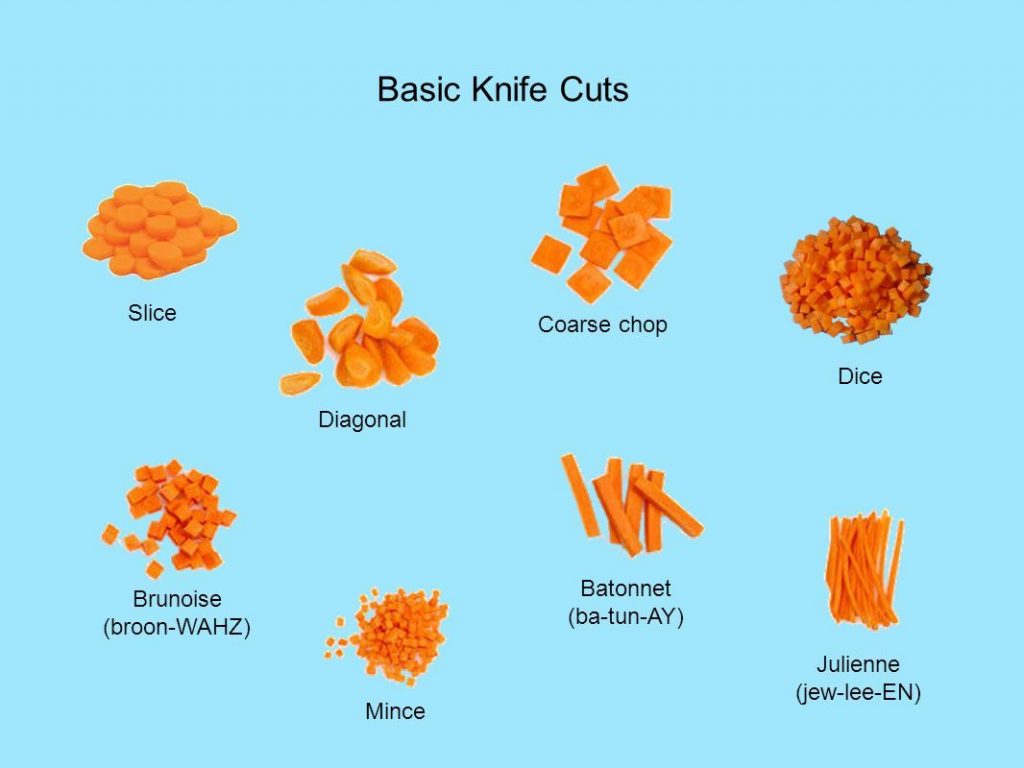Recipe: Salad Rolls with Peanut Sauce (Chicken and Tofu)
The vegetable Prep Basics class was our first class Fall term. Our goal for this class was to learn some knife skills that are essential for vegetable and ingredient prepping. When cooking, you’ll often end up prepping the same ingredients/ vegetables repeatedly, for example, onions, garlic, bell peppers. Learning the best, fastest and safest technique could make your cooking more enjoyable and save you lots of time in the kitchen.
Holding a Knife

The way you hold a knife can make a huge difference in the amount of control and force you have. Your other hand should be used to safely hold the ingredient/ vegetable you are cutting securely in place.
Protecting your fingertips

In order to protect your fingers on your other hand, it is important to use this technique to tuck your fingers away from the knife and let your knuckles rest against the side of the blade.
Types of knife cuts
There are several kinds of knife cuts, and depending on what you are preparing each cut could be useful.

For our cooking class, we mostly used the Julienne method. Julienne/French cut is cut into long, uniform strips like matchsticks. Julienne cut is often used for salad ingredients and green veggies, like cucumbers, bell peppers or zucchini.
In order to achieve this safely, it is important to ensure if the vegetable is round, cut a thin slice off one side to make a stable base.

Dorm hacks 101
We also wanted to highlight cooking techniques for students living in the dorms. Students who live on campus may not have access to a lot of kitchen equipment and therefore this can make cooking more challenging. Here at OSU pots, pans and other kitchen supplies are available to be checked out at the dorms. We wanted to take on the challenge to prepare the proteins required for this recipe in the microwave. We used canned chicken( cooked) and Tofu with soy dressing.
Assembling the Salad rolls
To assemble the wraps, you will need rice paper wraps. These are available at most Asian stores. Soak rice paper wrap in warm tap water for 10 seconds, or until pliable; carefully transfer to a slightly damp kitchen towel. Arrange your choice of vegetables and protein on the wrap and fold it over and its a WRAP! Serve with peanut sauce and enjoy!
We’re grateful to everyone that showed up to the cooking class!















